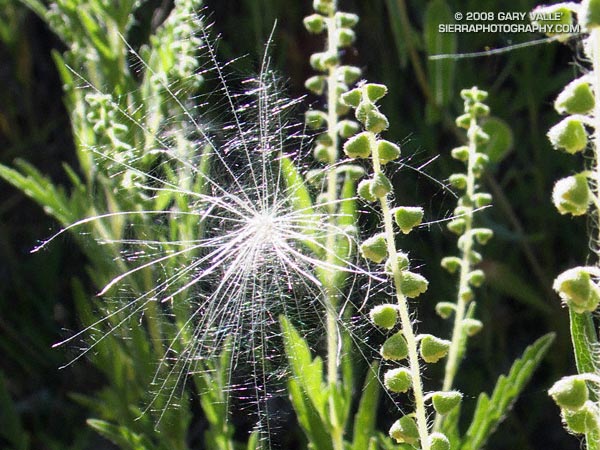
Adjacent to Las Virgenes Creek, not far from the cattails of Linear Green, is a sizable plot of western ragweed. On a recent run I noticed several tufts of fluff caught on the ragweed and backlit by the afternoon sun.
Investigating, I found the source of the tufts about 15 yards away — a patch of bull thistle — an invasive weed that is found throughout the U.S.
Like a dandelion, bull thistle seeds are attached to a downy pappus, and can be dispersed by wind. The rate at which these plumed seeds fall through still air is quite low — less than 1.5 ft/sec. This is slower than the minimum sink rate of a high performance sailplane. For a given plant height, the lower the sink rate, the farther the seed can potentially be dispersed from the parent plant.
Even though the plumed seed of bull thistle (Cirsium vulgare) is much larger and heavier than a dandelion’s familiar tuft, it is reported to have about the same ratio of plume area to seed weight. This is a key factor affecting the sink rate. However, the bull thistle’s seed is reported to sink at about a 15% slower rate than the dandelion’s. This may be attributable to aerodynamic and structural advantages of the secondary branches found in the plume of the bull thistle, but not in the dandelion’s.
Related technical papers:
Diaspore Size, Shape, and Fall Behavior in Wind-Dispersed Plant Species
Glenn R. Matlack
American Journal of Botany, Vol. 74, No. 8 (Aug., 1987), pp. 1150-1160
Botanical Society of America
The Aerodynamics of Plumed Seeds
D. F. Greene and E. A. Johnson
Functional Ecology, Vol. 4, No. 1 (1990), pp. 117-125
British Ecological Society
